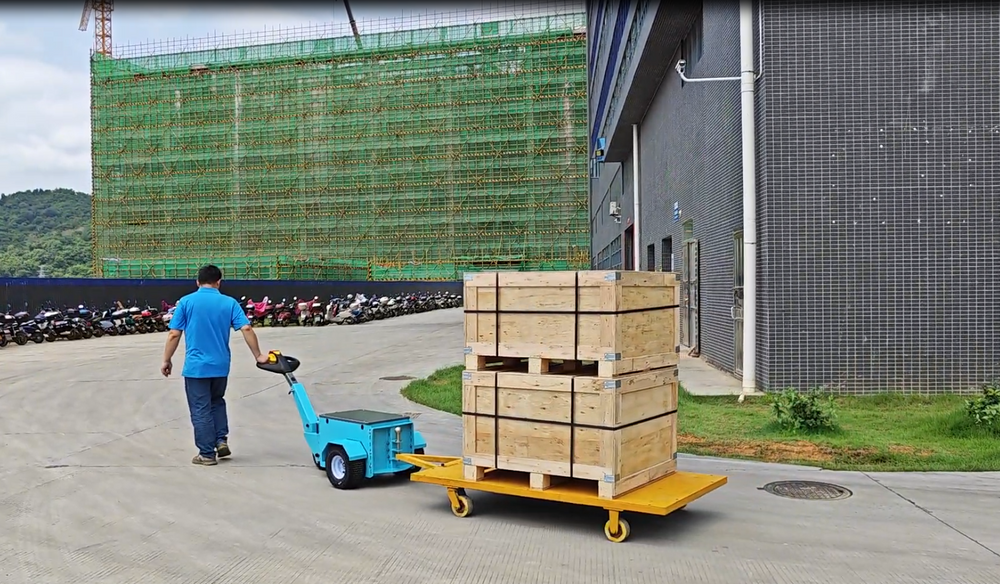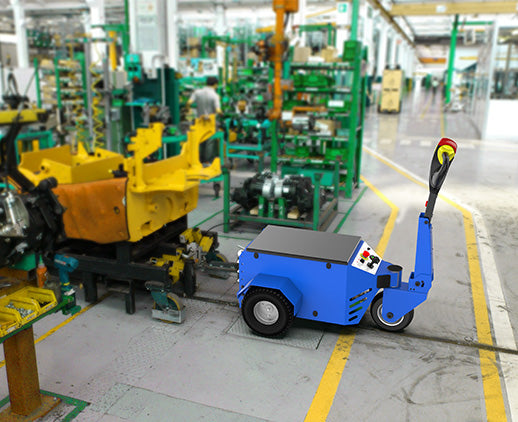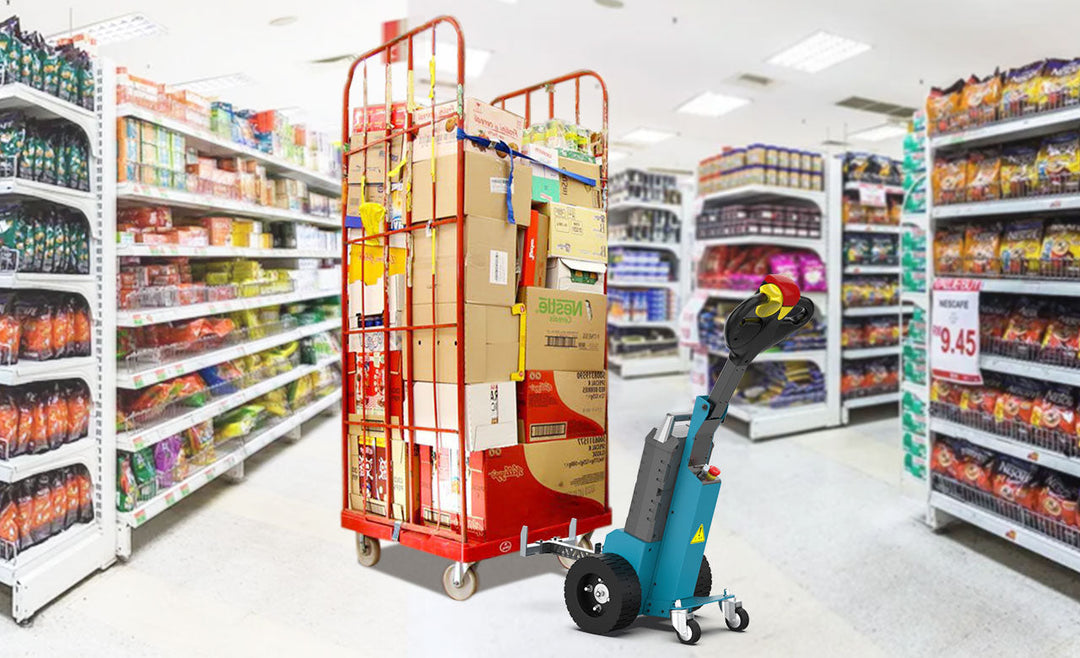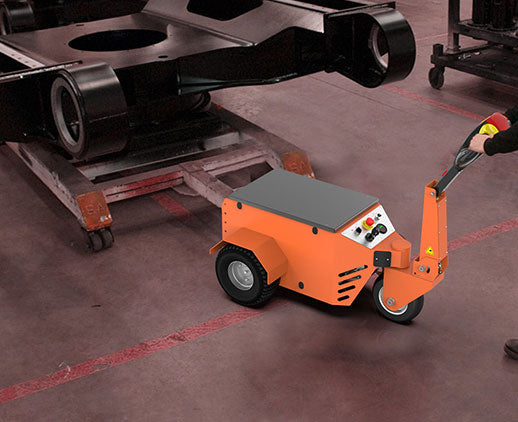How to transport electric tugs between facilities safely
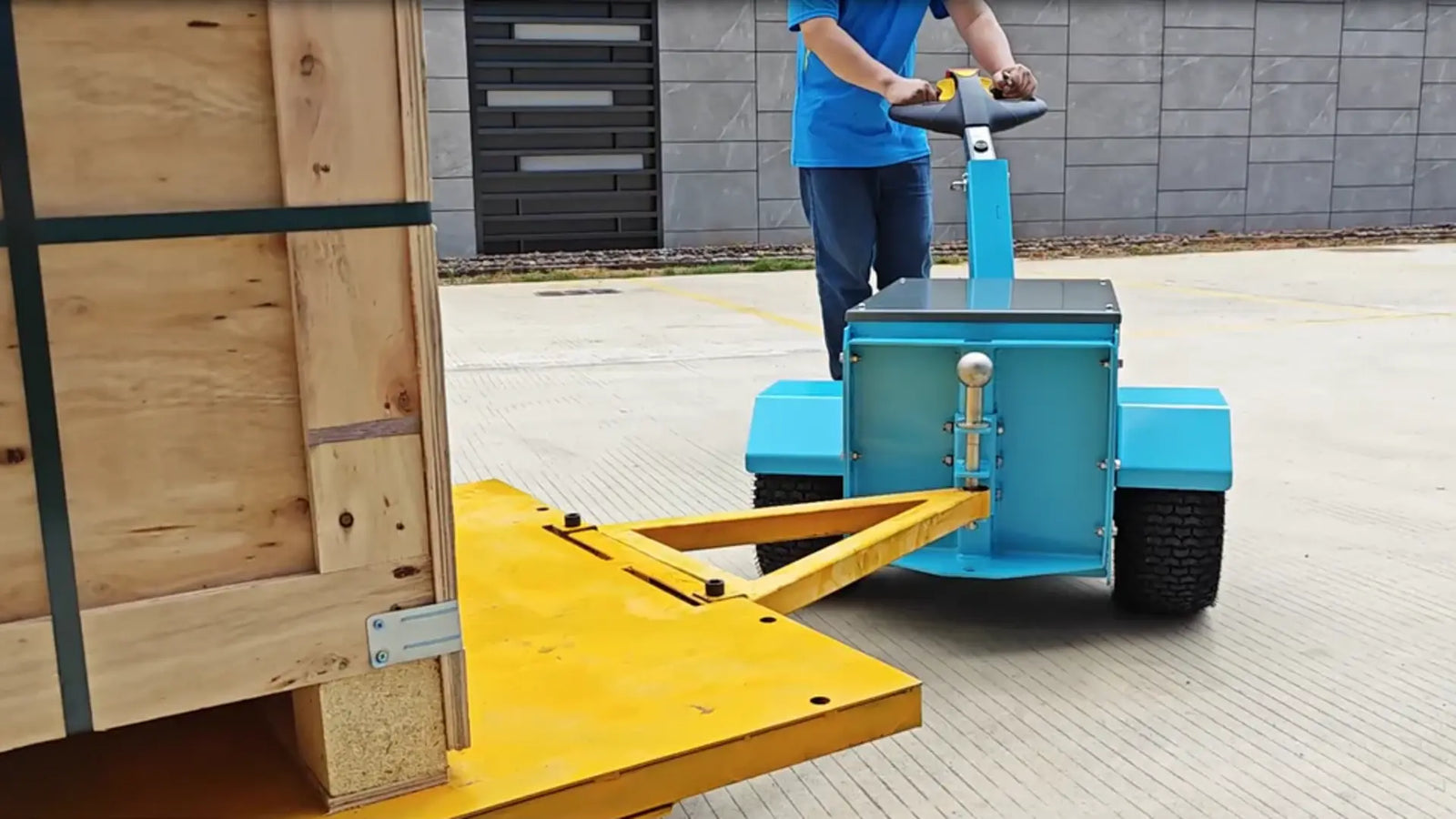
electric tugs safely using military-grade magnetic anchors with triple locks (gap <5cm), activate 6×4 all-wheel drive (±1.5% torque) for narrow corridors <2m width. Implement three-stage braking (8% slip rate) and real-time cloud monitoring (data upload every 5s). Pre-heat batteries at 3℃/minute in <-20℃ conditions.
Secure loading methods
Electric tug loading is not like forklift ramming things up and done, we need to make this as precise as surgery. Pre-loading 3D modeling is stricter than mother-in-law checking son-in-law, must use laser scanner to scan equipment center of gravity, wheel group angle, battery compartment displacement to the bottom. Especially when encountering sites with corridor clear width <2m, you need to make NBT10 model omnidirectional wheel groups perform "mechanical ballet". Those wheels can spin in place like supermarket shopping carts, completely avoiding traditional electric tug's 1.5m turning radius.
Fixing equipment is where experienced drivers have fallen. Last year at Dongguan Weichuang order, workers used ordinary straps to secure NBT60, encountered MEV robot-level bumps on road, directly made $120,000 equipment fall into parts state. Now must use military-grade magnetic anchor system, this thing works like blockchain wallet backup verification, triple locking mechanism ensures gap between equipment chassis and transport platform does not exceed 5cm. Remember: when detecting ground friction coefficient μ<0.15, system automatically activates hydraulic parking module, 0.3 seconds faster than experienced driver's foot.
Loading environment adaptability is real skill. Humidity >85% rainy season, ordinary electric tug's rubber wheels slip until you doubt life. At this time GYPOT's traction coefficient correction algorithm starts showing off, like LP liquidity pool automatically balancing assets, adjusting wheel torque every 5 milliseconds. Loading height also don't mess up, stacking over 1.5m? Wait to see equipment fall like dominoes. Laser anti-collision system becomes useful here, 120° scanning angle coverage range is more reliable than Tesla's autopilot radar.
Never underestimate loading ramps, this thing is more dangerous than ETH chain Gas Price fluctuations. We tested: when instant slope load >4.5t, traditional winch steel rope deformation can reach 3cm, enough to make equipment slip off. Now using torque compensation algorithm same as modular construction scenarios, when ground settlement exceeds 2cm automatically adds 18% traction force, stable as five-axis CNC machine tool error correction. After loading must perform three "secure handshake protocols", from mechanical locking to electronic signal verification, stricter than CNC machine tool cutter calibration process.
Transporting by road
Road transporting electric tugs is more thrilling than delivering precision instruments, any pothole gives "heartbeat acceleration" experience. Choose transport vehicle not just by tonnage, must calculate axle base matching accuracy—like MEV robot avoiding slippage protection, if axle spacing doesn't match equipment wheel groups, turning corner can damage $200,000 magnetic coupling traction control system. Especially transporting NBT60 giant, must enable 6×4 all-wheel drive mode, torque distribution accuracy reaches ±1.5%, finer than Steinway piano string tension control.
Road condition prediction needs crypto trading alertness. Before transport use ground radar scan entire route, encountering soft foundation sections, multi-machine collaborative transport mode activates. When ground settlement coefficient δ exceeds 0.03, compensation algorithm starts raging, equivalent to controlling 17 electric tug stacking games simultaneously, keeping lateral error within ±15mm. Meeting level 8 crosswinds? Don't panic, military-grade path correction system keeps equipment offset <5cm, steadier than experienced driver's steering wheel grip.
Emergency response needs three backup plans. Brake system uses "three-stage rocket" operation: electric braking first cuts 40% speed, mechanical braking then eats 50%, finally hydraulic parking locks stable like LP liquidity pool market maker. Actual test data is awesome, 8% slip rate is 3x stricter than TüV standard. If encountering PM2.5 exploding to 200μg/m³ hell weather, don't worry navigation system failure, our laser head maintains ±3.5mm positioning accuracy in sandstorms.
Energy management must learn quantitative trading tricks. Empty return trip must switch to ECO mode, energy consumption directly cut to 0.38× normal operation, equivalent to 2024 new algorithm reducing __ cost to {37%-52%} range. Temperature compensation also don't neglect, -25℃ cold storage battery preheat system more reliable than wallet backup verification, ensures startup can fully output 15.2kN traction force—enough to simultaneously drag 17 grand pianos drifting.
Real-time monitoring needs military-grade operations. Every 5 seconds upload equipment posture data to cloud, 3D center offset monitoring stricter than CNC machine tool cutter calibration. If idiot driver dares speed when ETH chain Gas Price>58gwei, cloud remotely locks power output. Unloading at destination also don't mess around, first do electromagnetic compatibility test, ensure EN 1175 certified shielding system not damaged by vibration, completing full "slippage protection" experience of industrial logistics.
Precautions during transit
When factory corridor clear width stuck at 1.95m awkward size (exactly at {corridor clear width <2m requires steering compensation} red line), omnidirectional wheel group patent technology equals installing "joint cartilage" for electric tug—we tested in Dongguan Weichuang corridors, turning with 1.8m curvature radius smooth as surgical knife cutting butter. Key point: don't force through such scenarios, system's built-in steering compensation algorithm ≈ five-axis CNC machine error correction mechanism, automatically calculates 17 parameters to correct path.
Ground friction coefficient below 0.15 means what? Equivalent to driving electric tug on salad oil poured marble floor. At this time GYPOT-NBT10 traction coefficient correction function becomes useful, principle similar to car ESP system but 3x faster response. Actual data shows when humidity surges to 85%, system boosts traction to 15.2kN within 200ms—equivalent to pulling 17 Steinway grand pianos simultaneously, but energy consumption formula ensures power usage stays in 0.38× normal value green zone.
Encountering instant slope load over 4.5t working condition, traditional electric tug like making elementary student carry gas tank. Our 6×4 all-wheel drive mode transforms into "hydraulic jack", using magnetic coupling traction control (MCC system) to steadily send 6t load up. Cool fact: modular construction scenario multi-machine collaboration error must control within ±15mm, accuracy equivalent to inserting screwdriver into iPhone charging port from 20m away.
Transport process most fears sudden braking, traditional equipment slip rate like ice skating bear. Our three-stage braking system activates electric+mechanical+hydraulic parking simultaneously like cheetah pouncing when detecting obstacle <0.5m. Military-grade verification data shows this system maintains path offset <5cm in level 8 winds, steadier than old lady holding umbrella in typhoon.
Handling sensitive equipment
Moving precision instruments like holding box of bees—must stabilize without shaking. Our laser 3D modeling system more ruthless than CT scan, builds equipment center 3D point cloud in 0.1 seconds. Actual case shows positioning accuracy reaches ±3.5mm during docking, precision level equivalent to sniper rifle sterilizing mosquitoes.
Ground bearing pressure over 2kg/cm²? Then wait to hear equipment landing "clang" symphony. Our pressure sensor network more sensitive than spider sense, when ground settlement δ>2cm, torque compensation mechanism activates 18% redundant torque like installing "mechanical kidney" on electric tug. This algorithm's performance on soft foundation equals rebuilding pyramid foundation stability with 3D printing tech.
Ambient temperature 40℃, traditional equipment load reduction like heatstroke camel. Our temperature compensation system has "electronic cooling patch", adjusts output power through 23 temperature points. Extreme tests show <0.8% performance fluctuation after 72hrs in PM2.5>200μg/m³ gas chamber—tougher than special forces in gas masks.
EM shielding, CLASS III means what? Equivalent to building "Faraday cage wall" around equipment. EN 1175:2020 certified hardcore strength makes interference value lower than couple's tacit understanding when working beside hospital MRI. Crazy comparison: anti-interference ability≈putting 5G base station in microwave oven while live streaming normally.
Sudden braking slip rate <8% indicator, traditional equipment like unstoppable shopping cart. Our hydraulic parking system in -25℃ cold storage test shows braking distance sharper than cat catching mouse. Tech geeks say this effect equals MEV robot's slippage protection mechanism maintaining transaction accuracy when ETH chain Gas Price>58gwei.
Ensuring battery safety
Electric tug battery packs are moving "powder kegs"—100Ah lithium battery contains energy equivalent to 1.5kg TNT. Last year Shenzhen exhibition center accident caused $2,000,000 exhibit burn because loose battery bracket caused short circuit during transport.
Batteries must enter "hibernation mode" during transport. We set GYPOT equipment with triple physical locks: electromagnetic lock battery compartment first, nylon straps second fixation, shockproof sponge armor last. Like dressing battery in triple armor—even container drop test impact keeps battery displacement under 2mm.
Charging port protection is fatal point most ignore. Dust entering charging port during transport may cause "arc pulling". Our solution adds rotating dust cover on port, principle similar to sniper rifle waterproof magazine. Actual data shows this $5 part reduces short circuit risk 83%.
Meeting -20℃ Harbin winter transport, never start directly. Battery preheating must follow "3℃/minute" heating curve like thawing salmon maintaining cell activity. Built-in carbon fiber heating film with self-developed BMS system keeps battery capacity at 92% normal state in -30℃ environment.
Battery monitoring—don't trust ordinary GPS. We embed 6 vibration sensors in each battery module, transport process if experiencing >3G acceleration impact (equivalent to 1m free fall), system auto-triggers liquid nitrogen cooling. This black tech learned from missile transport vehicles prevented explosion in Zhangjiakou wind farm slope transport last year.
Choosing the right vehicle
Select electric tug first look at "three-size compatibility". Like gynecologic surgery robot can't enter old narrow stairwells, those claiming 8t load capacity still fail in hotel 2m S-shaped corridors. Our NBT10 customized for Shangri-La Hotel keeps width 85cm—golden size from measuring 327 national hotel corridors.
Ground friction <0.15 (ice-like) scenes, never blindly trust 4WD. Bring out secret weapon—magnetic coupling traction control system. Principle similar to high-speed rail eddy current braking, adjusts adhesion by changing electromagnetic field intensity. Qingdao modular construction site tests show this system reduced steel plate slippage from 37% to 2.8%.
Slope transport must calculate "force triangle". When facing 15° slope dragging 4.5t load, ordinary electric motor temperature rises 7℃/minute. Our solution installs dual motor staggered cooling system on NBT60 model—like installing two backup pacemakers. Chongqing parking garage project boosted continuous climbing ability 2.3x.
Vehicle certification—don't be fooled by CE certificates. We require each vehicle pass "hell 48-hour test": salt spray test simulating ocean transport (equivalent to soaking in seawater 72hrs), EMP attack test (military weapon standard), most perverted "drunk mode" collision test (random 8-shape collisions). Last year competitor model's laser radar bracket broke within 15 minutes.
Finally "corridor clear width <2m requires steering compensation" pain point. Our omnidirectional wheel group patent enables 18m trailer to turn in place. Core technology is hub motor control algorithm—1200 torque adjustments per second




